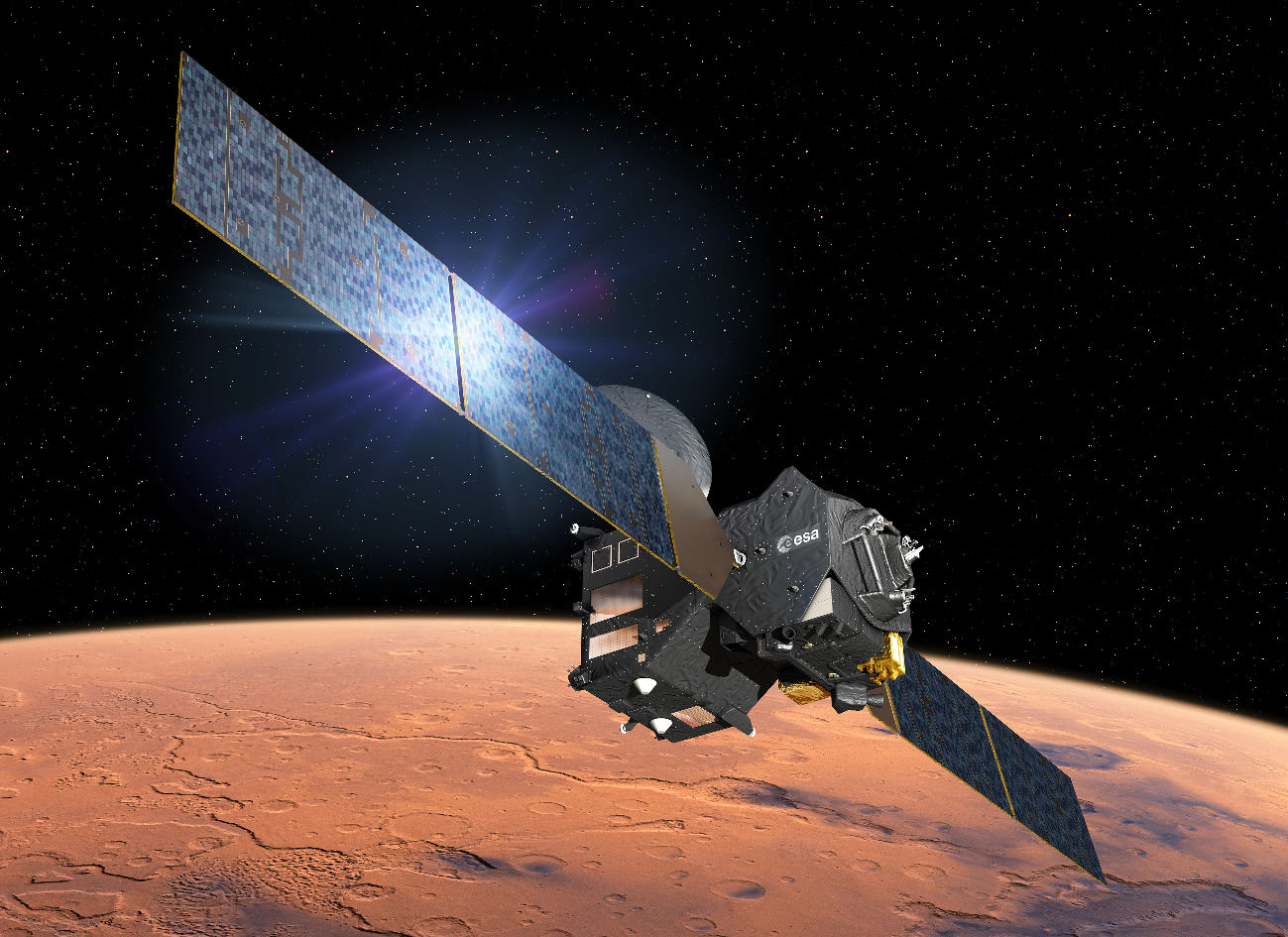The ExoMars Trace Gas Orbiter has imaged the martian moon Phobos as part of a second set of test science measurements made since it arrived at the Red Planet on 19 October. The Trace Gas Orbiter (TGO), a joint endeavour between ESA and Roscosmos, made its first scientific calibration measurements during two orbits between 20th and 28th November.
The first orbit focused on Mars itself. During the second orbit, the instruments made a number of measurements of Phobos, a 27×22×18km moon that orbits Mars at a distance of only 6,000km. The camera imaged the moon on 26th November from a distance of 7,700km, during the closest part of the spacecraft’s orbit around Mars. TGO’s elliptical orbit currently takes it to within 230–310km of the surface at its closest point and around 98,000km at its furthest every 4.2 days.
The focus of the mission now returns to preparations for aerobraking required to bring the spacecraft towards its near-circular science orbit by the end of 2017.
TGO’s main scientific goal is to make a detailed inventory of rare gases that make up less than 1% of the atmosphere’s volume, including methane, water vapour, nitrogen dioxide and acetylene. Of high interest is methane, which on Earth is produced primarily by biological activity, and to a smaller extent by geological processes such as some hydrothermal reactions.
The spacecraft will also seek out water or ice just below the surface, and will provide colour and stereo context images of surface features, including those that may be related to possible trace gas sources.
TGO will also act as a data relay for present and future landers and rovers on Mars, including the second ExoMars mission that will feature a rover and surface science platform, and which is scheduled for launch in 2020.



